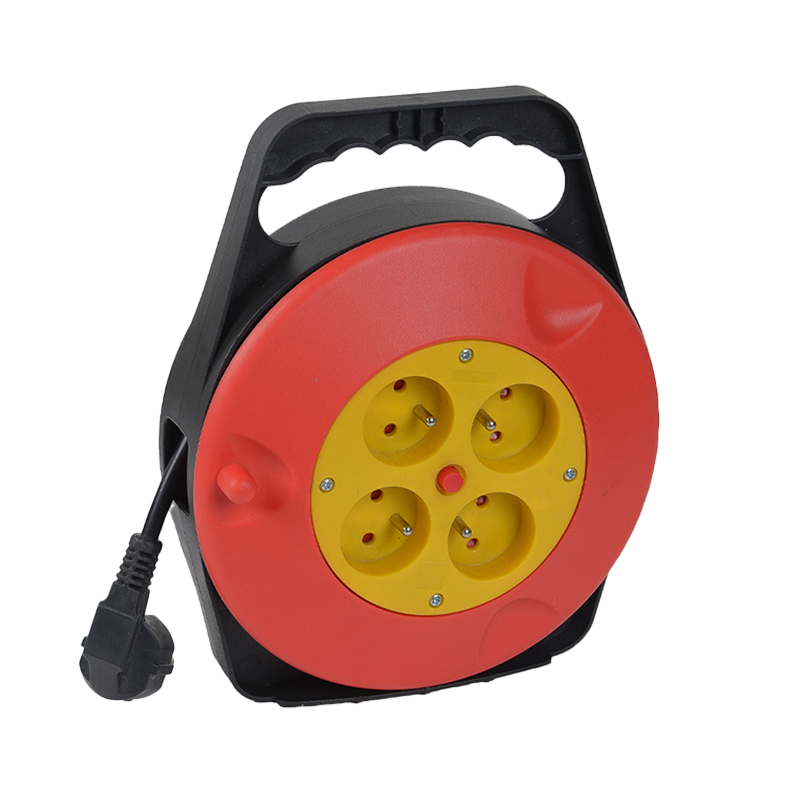The load capacity and current carrying capacity of retractable cable reels are very important factors when choosing the right product, especially in environments that require high-power devices or continuous use. Different models of retractable cable reels have different load capacities and current carrying capacities, which are usually related to the cable type, design, and environment in which they are used. The following is a detailed discussion of these capabilities:
Load capacity generally refers to the maximum electrical load or maximum weight that the cable reel can support. The load capacity of a cable reel is not only affected by the voltage resistance and current carrying capacity of the cable, but also related to the design and material of the reel. The load capacity generally has the following considerations:
The thickness and type of cable will affect the load capacity of the reel. For example, cables with thicker jackets can withstand greater loads and therefore generally support higher currents and power.
A larger reel can usually accommodate more cables, which means it can support a higher load capacity. The size of the reel is directly related to the length and specification of the cable.
Some cable reels have steel or aluminum casings, which are more durable under high loads; while reels with plastic casings may be more suitable for lighter loads, usually for domestic or light industrial use.
Current carrying capacity refers to the maximum current that a cable can handle, usually expressed in amperes (A). This capacity depends on several factors:
Different types of cables have different current carrying capacities. For example, common power cables (such as H05VV-F cables) have different current carrying capacities compared to heavy-duty cables (such as H07RN-F cables). Higher-quality cables usually have better insulation materials and can handle higher currents.

The larger the cross-sectional area of a cable, the more current it can carry. Generally, the cross-sectional area of a cable (such as 1.5mm², 2.5mm², 4mm², etc.) is directly related to its current carrying capacity. Thicker cables can carry more current and are suitable for high-power devices.
The length of the cable also has an impact on the current carrying capacity. Longer cables may result in a decrease in current carrying capacity due to the increased resistance of the cable, which may cause heat to build up. Long cables require special attention to current carrying capacity to avoid overloading.
Different retractable cable reels can support different current carrying capacities, and the corresponding current rating can usually be found on the product label. Common current carrying capacity ranges are as follows:
Low-power cable reels (suitable for home or small office):
Current carrying capacity: usually 5A to 10A.
Cable type: thinner cables such as 1.5mm² or 2.5mm² are common, suitable for small appliances and household equipment.
Medium-duty cable reels (suitable for factory or commercial environments):
Current carrying capacity: 10A to 20A.
Cable type: 4mm² or thicker cables are usually used, suitable for light machines or equipment in industrial environments.
High-duty cable reels (suitable for high-power equipment such as industry, construction sites, etc.):
Current carrying capacity: 20A to 50A or higher.
Cable type: 6mm², 10mm² or even larger cross-section cables are often used, suitable for high-power electrical equipment such as welding machines, air conditioners, large power tools, etc.
To ensure that the cable reel is not damaged when the load is too high, most high-quality retractable cable reels will have built-in overload protection. These protections usually include:
When the current exceeds the rated value, these devices automatically cut off the power to prevent damage to the equipment or overheating of the cable.
Some cable reels have an automatic recovery function, which can automatically reconnect the power when the current returns to a safe range.
Choose a reel with appropriate overload protection: It is very important to choose a cable reel with overload protection, especially in an industrial environment, where the current demand of the equipment may fluctuate greatly, and overload protection can prevent electrical accidents.
Even if the cable reel is nominally capable of carrying a certain current, if it is used for a long time at or above the rated value, the loss of the cable and reel will increase, and the service life may be shortened. It is recommended to avoid overloading.
The cable generates heat under high load conditions. It is very important to check the cable regularly for aging, wear, breakage and other problems to avoid electrical fires.
The load capacity and current carrying capacity of the retractable cable reel mainly depend on the type, material, size of the cable and the design of the reel. When selecting a cable reel, it must be determined based on the actual current load, power requirements and use environment. By rationally selecting a cable reel of appropriate specifications and ensuring that it has sufficient overload protection, the safe and efficient operation of electrical equipment can be ensured.



 English
English русский
русский















